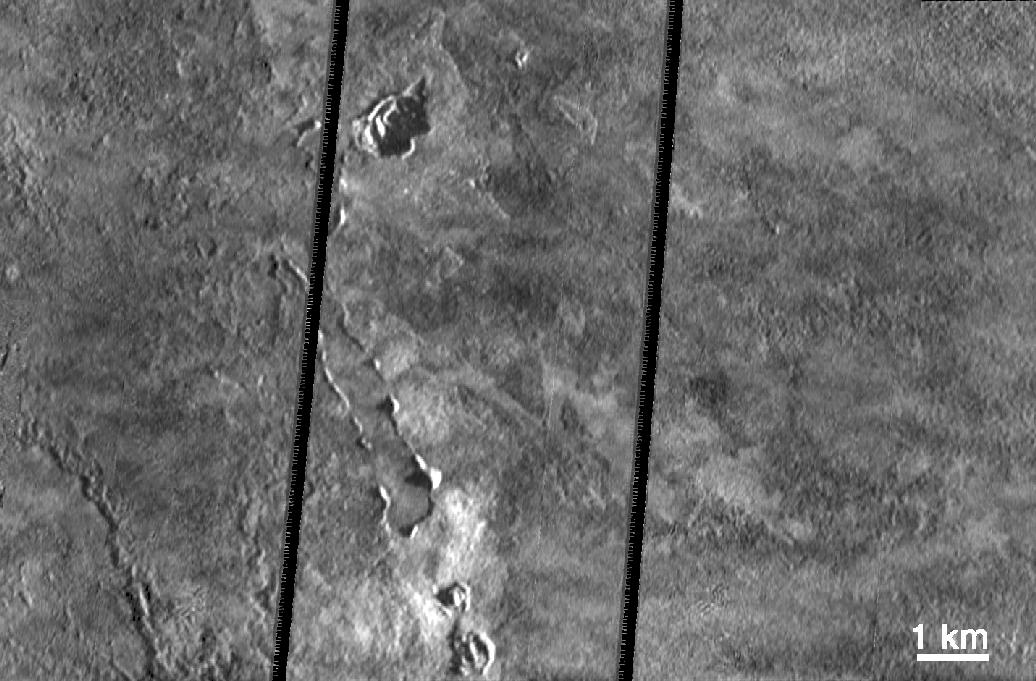

This very high resolution (19 meters, or about 21 yards, per picture element) mosaic shows the complex collection of lava flows, pits, domes and possibly rafted plates of lava on Io. The images were taken by NASA's Galileo spacecraft on 11 October 1999 during its 24th orbit. The observation targeted a 70 kilometer (44 mile) long lava flow that erupted from Pillan Patera in June 1997. Rafted plates like those that appear in this image are also seen on Earth and Mars; they may indicate that the lava was flowing rapidly enough to rip apart the crust as it formed. Galileo scientists believe that most of these lava flows, which cover about 400 square kilometers (160 square miles), were emplaced in about 2 weeks. A shadow that appears to be cast by the edge of an individual lava flow (lower left) indicates that the flow is 10 meters (yards) thick.
The pits and domes, which range from a few tens of meters to many hundreds of meters in scale, are more difficult to explain. One possibility is that these are the result of interactions between the hot lava and a Io's volatile-rich surface. Such vents are observed on Earth when lava flows interact with ground water or ice far from the actual source of the lava.
A joint observation of Pillan on 27 June 1997 by Galileo's onboard camera and near-infrared mapping spectrometer provided a temperature estimate for the lava of 1900 Kelvins (3900 degrees Fahrenheit), hundreds of degrees hotter than terrestrial eruptions. Although the lava flows have cooled significantly since then, they were still warm at the time of these observations.
North is to the top of the picture and the sun illuminates the surface from the right. The images were taken on 11 October 1999 at a distance of 1900 kilometers (1200 miles) from Io. The large doses of radiation to which the spacecraft is subjected each time it passes close to Jupiter caused a problem with Galileo's camera which resulted in scrambling of these images. Engineers at JPL were able to reconstruct the images, but black stripes remain where some data could not be recovered.
Image produced by: Cynthia Phillips, Planetary Image Research Lab. (PIRL), Lunar and Planetary Lab. (LPL), University of Arizona
The Jet Propulsion Laboratory, Pasadena, CA manages the Galileo mission for NASA's Office of Space Science, Washington, DC. JPL is a division of the California Institute of Technology, Pasadena, CA.
This image and other images and data received from Galileo are posted on the World Wide Web, on the Galileo mission home page at http://galileo.jpl.nasa.gov/. Background information and educational context for the images can be found at http://galileo.jpl.nasa.gov/images/io/ioimages.html.
NASA's Planetary Photojournal PIA-02536
May 19, 2000